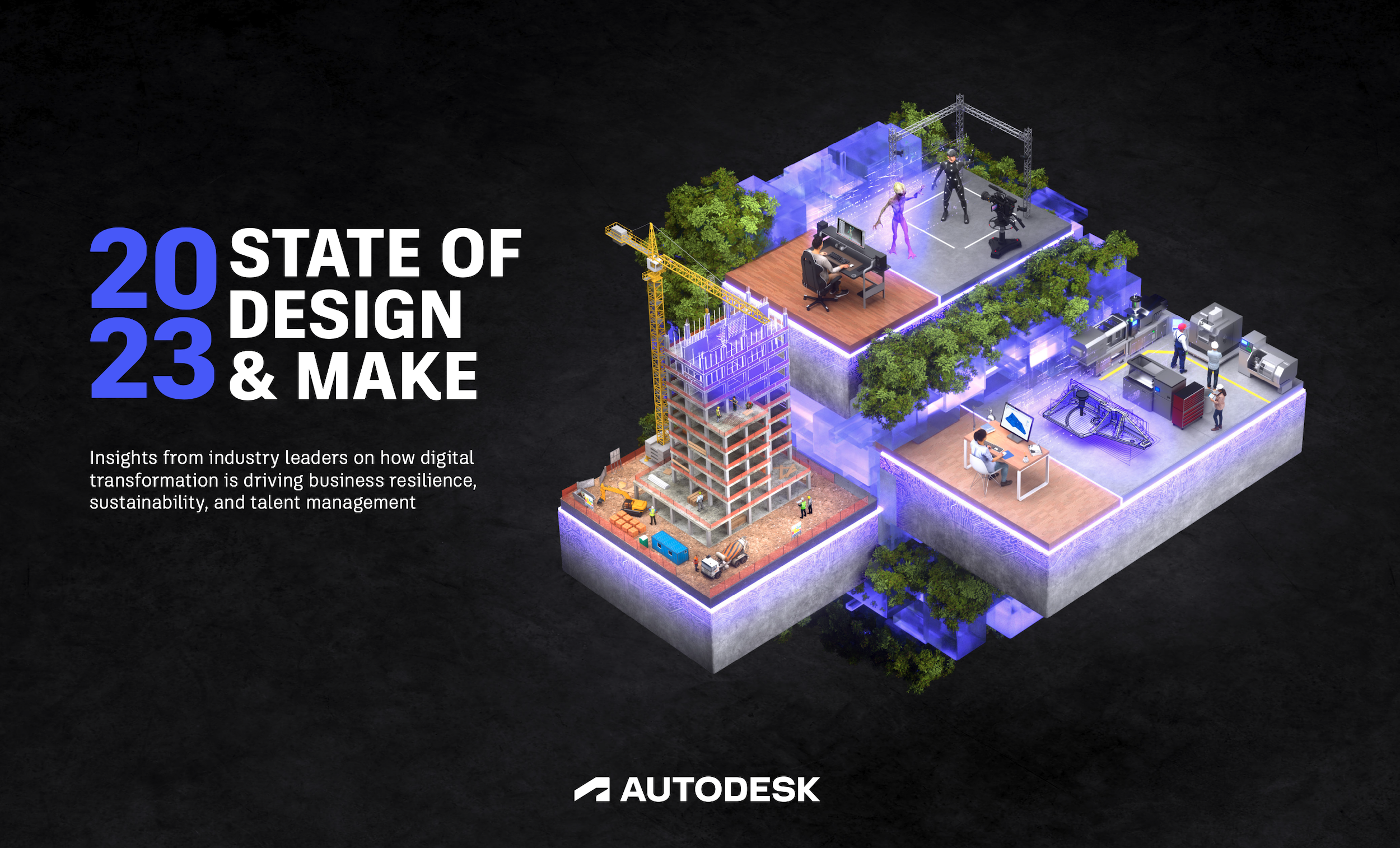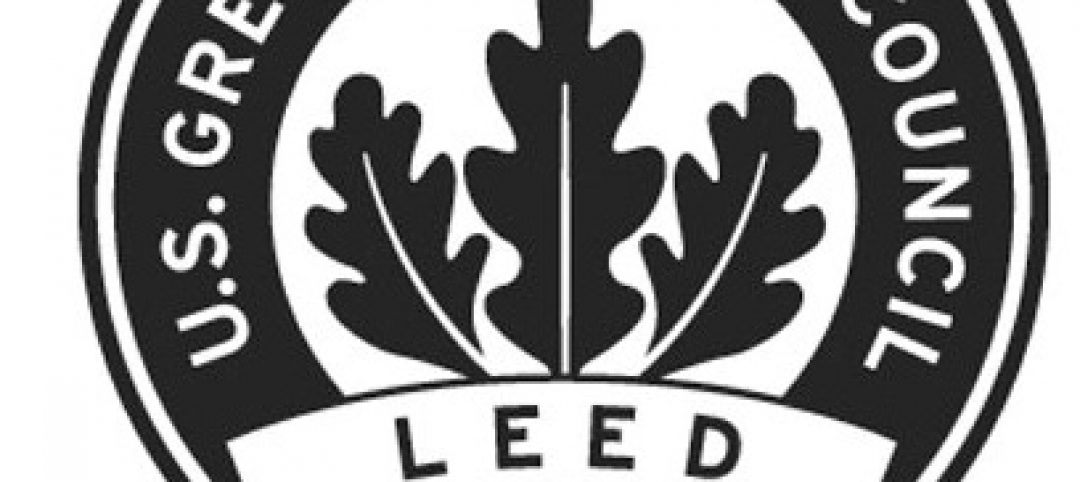A recent study, 2023 State of Design & Make by software developer Autodesk, contains some interesting takeaways for the design and construction industry.
Respondents to a survey of industry leaders from the architecture, engineering, construction, product design, manufacturing, and entertainment spheres strongly support the idea that improving their organization’s sustainability practices is good for business. Some 80% of respondents say stellar sustainability policies and practices strengthen their organization’s reputation and help in the war for talent.
“Sustainability attracts talent,” says Fiona Short, principal and architect at Warren and Mahoney, a multidisciplinary architectural practice, in a post on the Autodesk web site. “You want the right people to come and want to work for you, and you want to be a company that people are proud to work for. A focus on sustainability helps you to get the best out of people because they’re passionate and their work aligns with their values.”
The survey also found evidence to support the notion that digitally mature companies have a distinct advantage over peers who lag in adopting technology such as cloud computing. Many companies believe a robust digital platform that enables remote work will be a key competitive advantage. And the respondents say the performance gap between digitally adept firms and laggards is getting wider.
“If there is one overarching takeaway from the survey data and interviews, it’s this: success today and tomorrow depends on our ability to transform how we work, and digital tools will help us respond,” the Autodesk post says. “Modern, trusted design and make platforms allow people to create better, faster, more affordably and sustainably, by making data more accessible and extensible, and collaboration more seamless across functions, geographies, and industries.”
Related Stories
| Mar 8, 2011
BlueCross HQ campus awarded LEED Gold
BlueCross BlueShield of Tennessee announced its certification as a LEED Gold campus, established by the U.S. Green Building Council and verified by the Green Building Certification Institute (GBCI). BlueCross’ headquarters, totaling 950,000 square feet of office space, is the largest LEED Gold corporate campus in Tennessee, and the second largest in the nation.
| Mar 2, 2011
Design professionals grow leery of green promises
Legal claims over sustainability promises vs. performance of certified green buildings are beginning to mount—and so are warnings to A/E/P and environmental consulting firms, according to a ZweigWhite report.
| Mar 2, 2011
Top 10 states for LEED green buildings
According to the U.S. Green Building Council's 2010 list of top 10 states for LEED-certified commercial and institutional green buildings per capita (based on the U.S. 2010 Census information), the District of Columbia leads the nation, with 25 square feet of LEED-certified space per person in 2010. Nevada, being the leading state, has 10.92 square feet per person in 2010.
| Mar 2, 2011
The extraordinary growth of green building—A rebuttal to an article on why green building adoption is slow
In this rebuttal to The Green Building Adoption Rate is Slow, Find Out The Practical Reasons Why, the author argues that in fact the growth rate has been very high and that much of it came during a time of economic unrest and tight capital, which makes it all the more extraordinary.
| Mar 1, 2011
Smart cities: getting greener and making money doing it
The Global Green Cities of the 21st Century conference in San Francisco is filled with mayors, architects, academics, consultants, and financial types all struggling to understand the process of building smarter, greener cities on a scale that's practically unimaginable—and make money doing it.
| Mar 1, 2011
USGBC's new LEED Interpretations similar to old precedent-setting CIRs
This week the USGBC launched its long-awaited LEED Interpretations process and database. LEED Interpretations are like project-specific Credit Interpretation Rulings, but unlike those CIRs, they can be applied to multiple projects. LEED project teams with a unique situation or a question not answered by existing LEED resources have had access to CIRs since 2009, but those CIRs have been limited. With the launch of LEED Interpretations, the USGBC hopes to broaden its scope.
| Feb 25, 2011
Denver excelling in LEED green building development
The mile high city has a decidedly green tinge. The U.S. Green Building Council (USGBC) today noted that nearly 30 projects in Denver have achieved LEED green building certification since 2010 and two of these developments achieved LEED’s highest rating, Platinum.
| Feb 25, 2011
Procter & Gamble will pursue LEED for all new sites globally
Procter & Gamble will pursue LEED certification for all new sites. P&G's Taicang plant in China - which is breaking ground today - is the first P&G manufacturing site to pursue LEED certification, with several additional new P&G sites currently working toward the same distinction globally.
| Feb 24, 2011
Perkins+Will designs 100 LEED Certified buildings
Perkins+Will announced the Leadership in Energy and Environmental Design (LEED) certification of its 100th sustainable building, marking a key milestone for the firm and for the sustainable design industry. The Vancouver-based Dockside Green Phase Two Balance project marks the firm’s 100th LEED certified building and is tied for the highest scoring LEED building worldwide with its sister project, Dockside Green Phase One.
| Feb 24, 2011
New reports chart path to net-zero-energy commercial buildings
Two new reports from the Zero Energy Commercial Buildings Consortium (CBC) on achieving net-zero-energy use in commercial buildings say that high levels of energy efficiency are the first, largest, and most important step on the way to net-zero.








